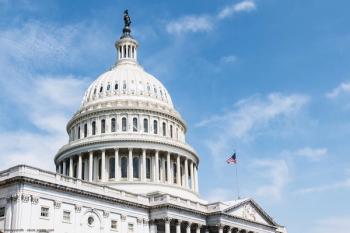
State telemedicine rules relaxed during COVID-19 crisis

"In the coming days, months, and years, physicians must be vigilant about protecting patient privacy and safety and maintaining appropriate reimbursement standards," writes the AACU's Ross E. Weber.
Based on a partnership with Urology Times, articles from the American Association of Clinical Urologists (AACU) provide updates on legislative processes and issues affecting urologists. We welcome your comments and suggestions. Contact the AACU government affairs office at 847-517-1050 or
One of the most transformative changes to the practice of medicine brought about by the coronavirus disease 2019 (COVID-19) pandemic has been the swift integration of telemedicine into the routine of even the most tech-averse doctor. Seemingly overnight, laws, regulations, and payer policies were updated to facilitate health care delivery online and over the phone.
Most impactful, perhaps, was the March 17 announcement that Medicare would reimburse providers for telemedicine services at the same rate as in-person visits throughout the public health emergency. In addition, states have steadily adopted policies to temporarily authorize and encourage telemedicine.
Licensure requirements
When Medicare expanded access to telemedicine, the Centers for Medicare and Medicaid Services noted that although the public program would allow physicians licensed in one state to provide services to Medicare beneficiaries in another state, relevant state licensure laws would still apply. As of April 21, 45 states have issued waivers to modify in-state licensure requirements for telemedicine in response to COVID-19, according to the
The position taken by the Mississippi Board of Medical Licensure, for one, has evolved since the agency’s broad decree on March 14. By March 24, after receiving more than 1200 applications from out-of-state providers, the
Further complicating matters, states differ on how that relationship can be established. In New Jersey, a law signed by Governor Phil Murphy on March 19 expanded the authority of doctors to provide telemedicine services even without an established relationship, but only for services related to screening for, diagnosing, or treating COVID-19.
Ease of access
In addition to relaxing licensing standards to permit more physicians to practice telemedicine, several common policy changes are being instituted via executive orders to enhance access to remote care, including allowing a provider’s home to be an originating site; consenting to the telephone as being an acceptable means of delivery; expanding the list of eligible providers to include allied health professionals; and requiring insurers to not only cover telemedicine services, but also reimburse at the same amount as an in-person visit.
In California and Washington, officials sped up the implementation of new laws originally set to go into effect in 2021 requiring private payers to cover services delivered via telemedicine and reimburse for those services at the same rate as an in-person visit. During the COVID-19 emergency, California has implemented the coverage provision, whereas Washington immediately imposed both the coverage and payment requirements.
More must be done, according to the American Medical Association (AMA), which calls on states to “eliminate insurer practices of creating separate telemedicine networks or incentivizing patients to use a separate telemedicine provider [e.g., Teladoc, ConsultADoctor, and Doctor On Demand], which may not include contracted physicians who provide in-person care to patients.”
Several states have acted swiftly during the public health emergency to ensure patients have access to telemedicine from the physician of their choice. Washington, once again, has been a leader in this area, as have Illinois and Massachusetts, both of which instituted a requirement that insurers allow “any willing contracted physician to provide telemedicine services directly to new and established patients, without requiring theyâ¯contract with a specific telemedicine service,” according to
Payment policies
As of
By executive order or emergency legislation, several additional states (Massachusetts, Arizona, Maine, New Jersey, and Washington) are, at least temporarily, requiring that telemedicine services be paid at the same rate as in-person services. These policies change almost daily and are monitored by several organizations, including the
Telemedicine here to stay
A Medical Economics®
Therefore, in the coming days, months, and years, physicians must be vigilant about protecting patient privacy and safety and maintaining appropriate reimbursement standards. When the dust settles, the medical community will be stronger, more efficient, and poised to deliver outstanding patient care in any setting.
For further information
• Licensure:
• Standards for establishing a doctor-patient relationship:
• Reimbursement:
• Coding:
Newsletter
Stay current with the latest urology news and practice-changing insights — sign up now for the essential updates every urologist needs.


















